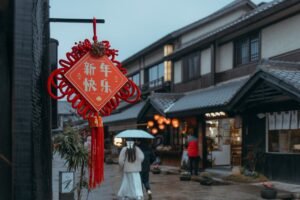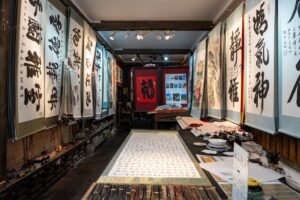Table of Contents
ToggleA Glance into History
The development of China’s educational system is strongly influenced by its lengthy history. The Sui and Tang dynasties (581-907 AD) pioneered the Imperial Examination (科举 Kējǔ) system, which established a systematic procedure for choosing officials based on merit. This procedure was continued through the Qing era until it was abandoned in 1905.
The education system underwent considerable modifications after the founding of the People’s Republic of China in 1949. The Communist Party developed a Soviet-inspired system emphasizing literacy and worker development. Nevertheless, the Cultural Revolution (文化大革命 Wénhuà Dàgémìng), which lasted from 1966 to 1976, slowed down this development.
China underwent extensive educational reforms during the post-cultural period Revolution (1976–present), moving away from a system that prioritized politics in favor of one that promotes contemporary and global viewpoints.
Modern Education Structure
The three main levels of the modern Chinese educational system are primary education (小学 xiǎoxué), secondary education (中学 zhōngxué), and tertiary education (高等教育 gāoděng jiàoyù).
Primary and Secondary Education
In terms of improving elementary school accessibility, China has achieved impressive strides. A nine-year compulsory education programme is in existence as of the most recent statistics before my knowledge threshold in 2021, covering six years of primary school and three years of junior secondary school. The government’s dedication to raising the literacy rate and achieving universal primary education is reflected in this policy.
Higher Education
Since the late 1990s, China’s higher education system has expanded quickly, transitioning from an elite to a mainstream education paradigm. Most of the world’s universities and colleges are now located in China, with a sizable international student population. The expansion of higher education is intended to meet the rising demand for highly qualified workers in China’s transforming economy.

Future Directions and Challenges
The need for an educated, talented workforce is expanding as China seeks to globalize and integrate into the global economy. This affects the country’s educational system, which is pressured to keep up with modernization and academic quality improvements.
Despite the tremendous development, the system still has issues, including educational inequality, with disparities in access to education between urban and rural areas and regions. Although it has undergone improvements, the national college entrance exam known as the “Gaokao” system (高考 gāokǎo) is still a complex process for students, and there is constant discussion about its fairness and efficiency.
Overall, China’s education system has evolved and changed to reflect the country’s historical development, socioeconomic changes, and aspirations in the international arena. China wants to raise a future generation that will be able to uphold and advance its place in the world, so it is continuing to focus on education reform and modernization.
Conclusion
China’s education system has changed and evolved throughout the years, reflecting the country’s journey through centuries of rich history, social upheavals, and economic revolutions. The current Chinese education system illustrates the country’s objectives for a knowledge-based, internationally competitive society with its dedication to universal primary education and the enormous expansion of higher education.
But problems still exist. Significant challenges include the disparities in educational resources and access between urban and rural areas, the ‘Gaokao’ (高考 gāokǎo) system’s demands, and the necessity for ongoing education quality improvement to meet the needs of a fast-changing global economy.
The story of how China’s educational system is evolving and changing is continuous. The country’s education system is more important as a driver of individual achievement, social mobility, and broader national advancement as it maintains its trajectory of socioeconomic expansion and increased global participation. It is a developing narrative that exemplifies the country’s motto of “pursuing progress while maintaining stability” and is essential to comprehending China’s future in the twenty-first century.
Contact our head teacher Chen Huimin at info@lcchineseschool.com if you want to learn Chinese or have additional questions about our Chinese programs.
REGISTER for our SUMMER CAMP in 2023!
Learn about our Internship Program in China.
Learn about holidays in China in 2023.
Get free Chinese learning resources.








